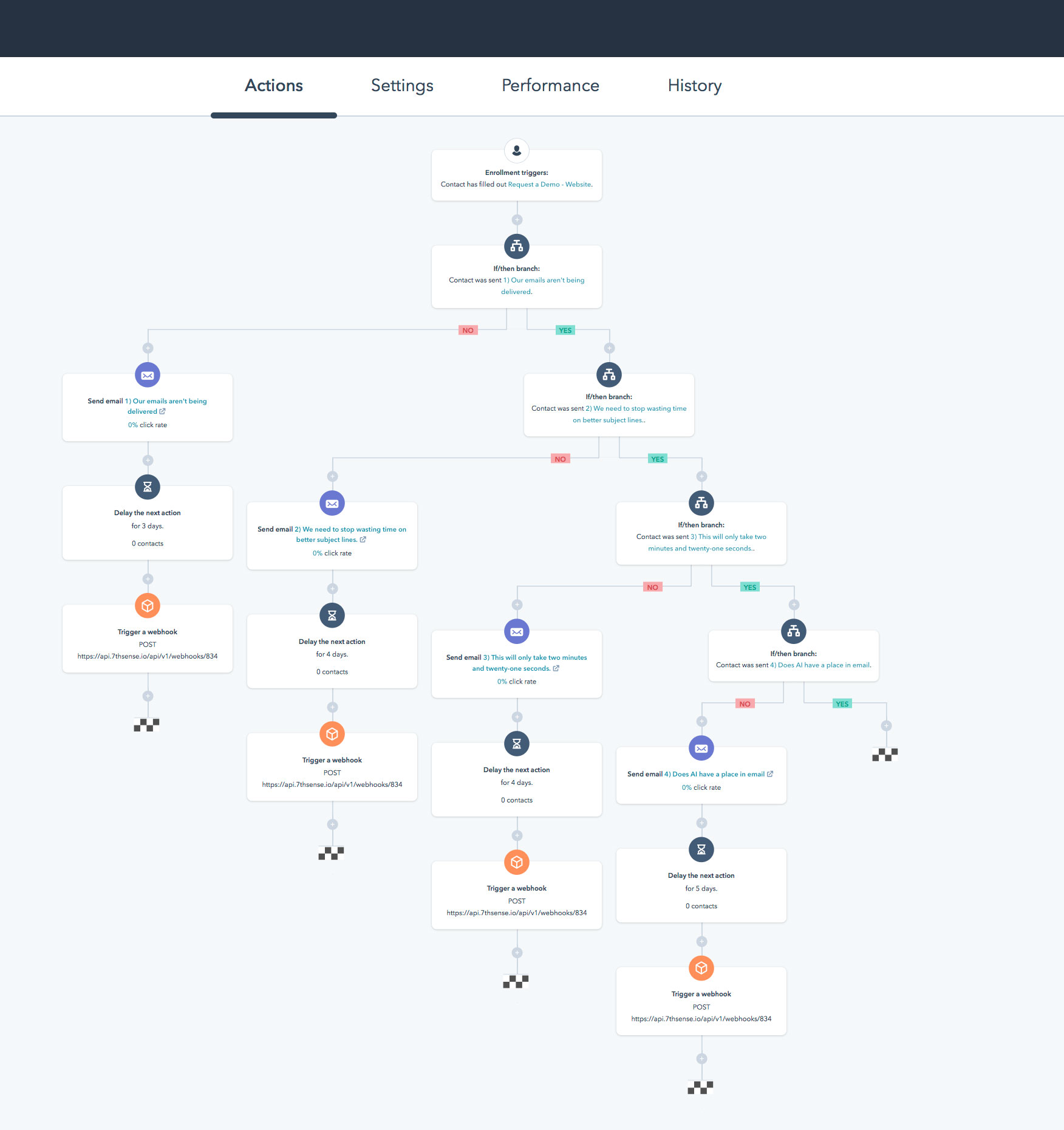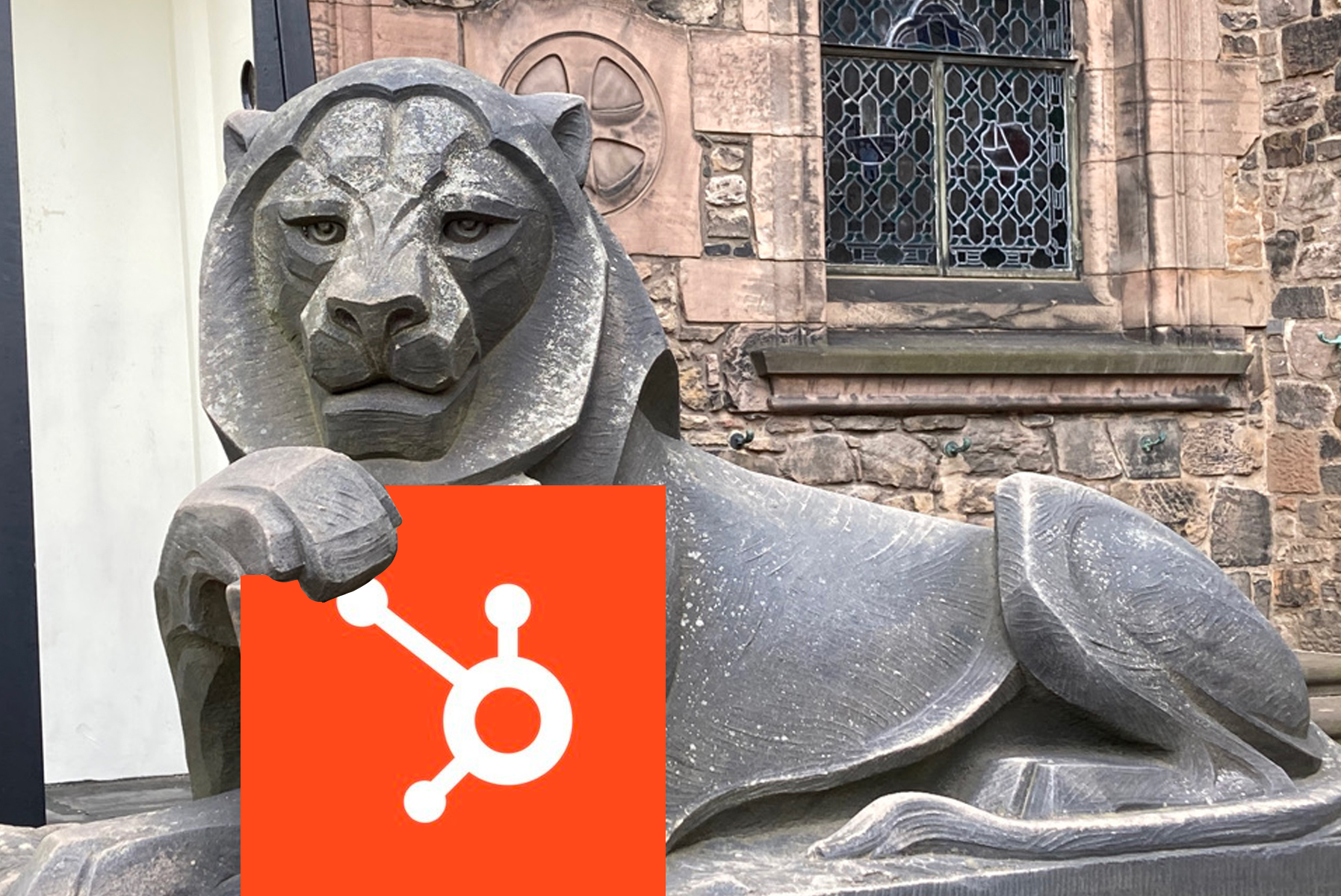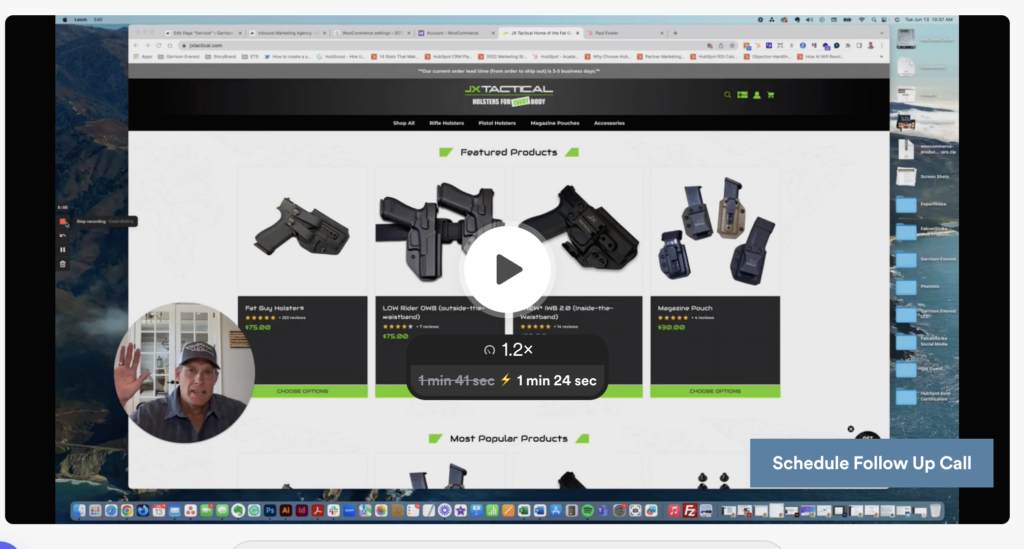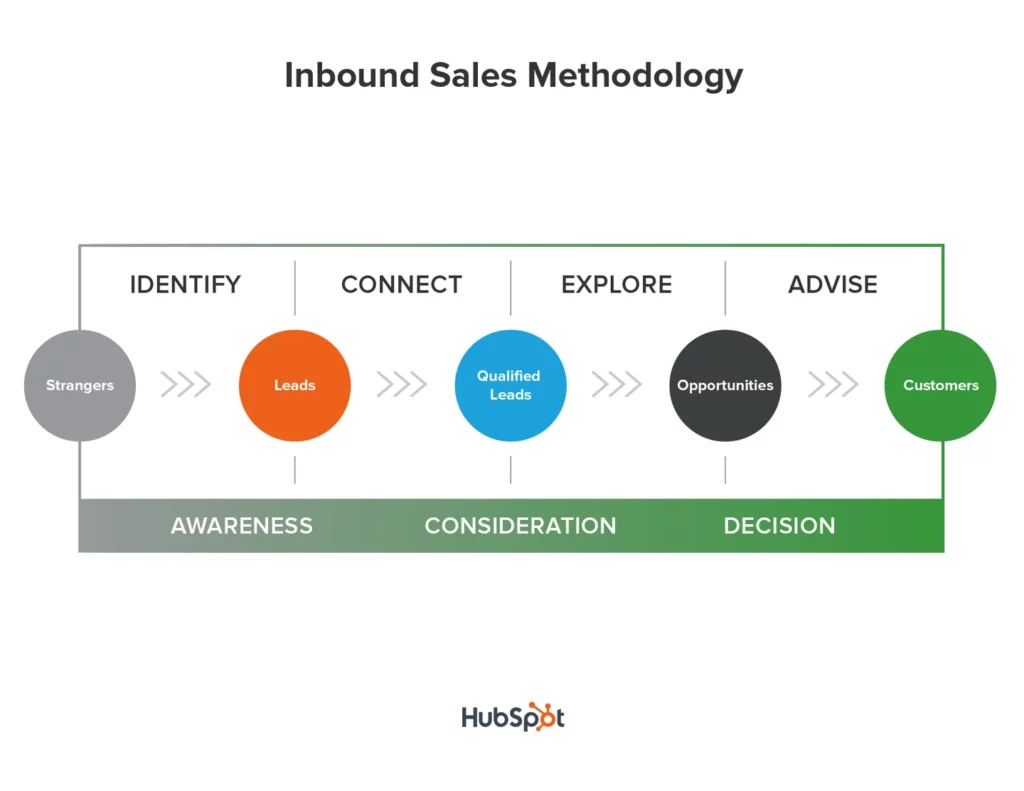
Creating your BrandScript and getting your sales and marketing teams aligned is a great feeling.
However, a clear message can only take you so far in the digital world. You have to communicate your message to your target audience and have the right tools in place to help you track, optimize and improve over time.
In this post, I want to highlight how StoryBrand and HubSpot—that when combined, will help your business achieve the growth result you’re looking for. HubSpot is a CRM platform that connects everything scaling companies need to deliver a best-in-class customer experience in one place. HubSpot’s crafted, not cobbled solution helps teams grow with powerful tools but better together.
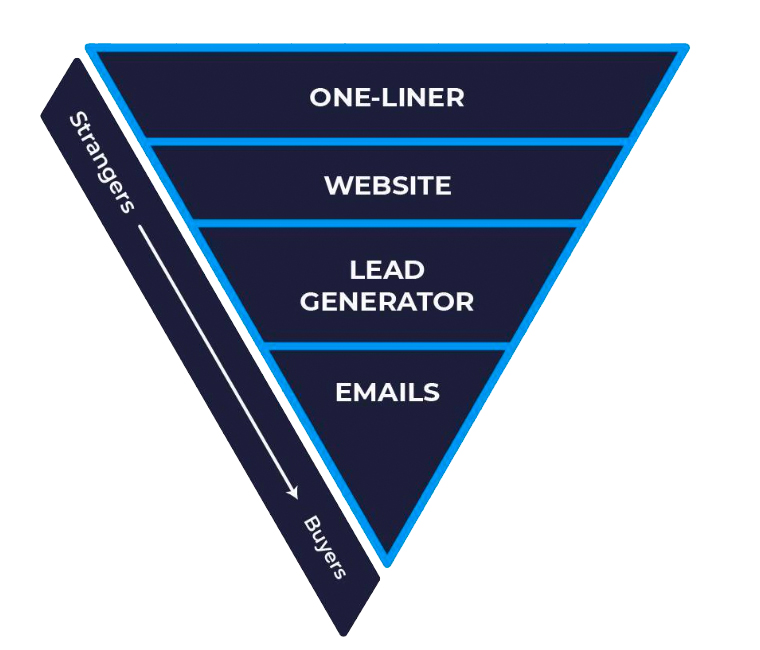 With HubSpot, customers come first, customization is simple, and teams are unified through a connected CRM.
With HubSpot, customers come first, customization is simple, and teams are unified through a connected CRM.
The StoryBrand sales funnel requires four elements to make your website work:
- One-liner
- StoryBrand Wireframe/Website
- Lead Generator
- Sales Funnel (Email Welcome Series and Segmentation)
These four elements work to engage your prospects, build trust, brand your message while simultaneously warming your prospect up to the idea of buying from you which turns your website into a 24/7/365 growth engine.
By combining the StoryBrand sales funnel with HubSpot, you’ll have a powerful marketing program that will grow your business faster and better. It’s amazing to me how so many companies don’t implement this. The ROI over 6-9 months grows to over 5x!
1. Sales Funnel: Lead Generator, Email Automation Series and Segmentation
HubSpot comes with built-in landing page tools, forms and email automation that make it easy for you to set up and track results. The intuitive interface is simple to understand and segmentation is also easily accomplished by setting up your buyer personas. By utilizing the email automation steps in the StoryBrand sales funnel framework, you can create a 24/7/365 marketing program that delivers qualified leads to your in-house sales team or if you’re more D2c – more contacts for your profitable email marketing program.
2. CRM
HubSpot’s free CRM allows you to organize your prospects, direct leads to members on your sales team, set up meetings, record conversations, set goals, and keep your sales goals on track in realtime. The CRM also includes video integration and integrates with countless ERP systems that most manufacturers rely on. You can also create playbooks that coach your team to maximize their sales process and calls. Another powerful component of the CRM is conversations. Having the ability to chat with your prospects when they are actively searching for solutions is a powerful way to increase sales. In our own studies, we’ve increased direct sales by over 15%.
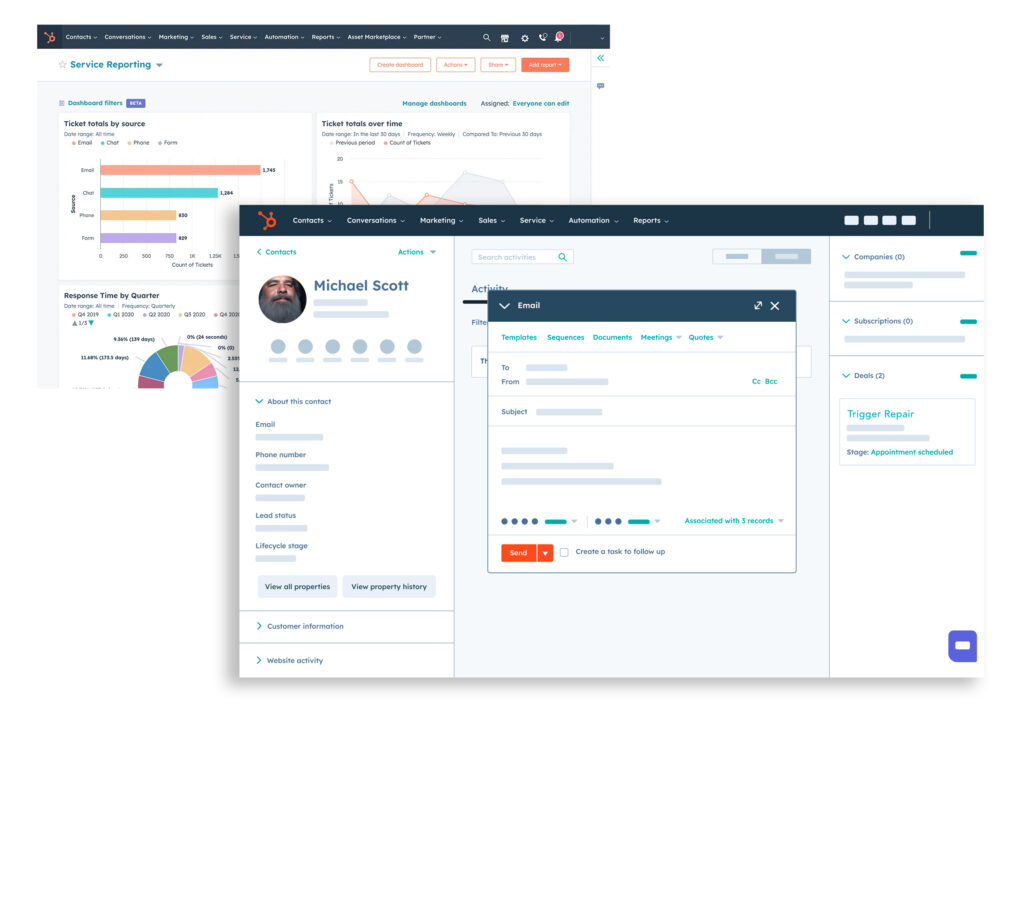 3. Data: Understand what’s Working and What’s Not
3. Data: Understand what’s Working and What’s Not
You can’t track what you can’t measure. One of the biggest mistakes we see companies make when they implement their BrandScripts is that they don’t monitor their website to see if it made any difference. They fail to track an increase in dwell time, leads, and if the bounce rate went down or up. HubSpot brings numerous reporting tools that you can use to steer your growth efforts in the right direction. It helps you create pillar pages that aid in your SEO efforts as well.
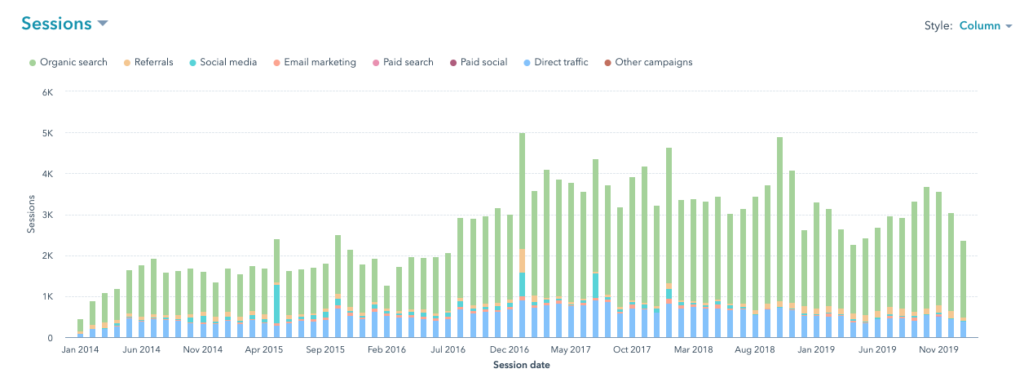
4. Delight Customers at Scale
With more and more customers demanding better service, you will need to focus on how you deliver your brand’s customer experience. Here are a few vital statistics:
- 90% of Americans use customer service as a factor in deciding whether or not to do business with a company. (American Express)
- Investing in new customers is between 5 and 25 times more expensive than retaining existing ones. (Invesp)
- 49% of American consumers switched companies last year due to poor customer service. (New Voice Media)
- 81% of Americans believe that business are either meeting or exceeding their customer service expectations. (American Express)
HubSpot’s Service Hub measures customer experience, helps delight them at scale, and helps customers help themselves. 50% of customers have left a brand for a competitor who was able to stay more relevant and better satisfy their needs. (InMoment)
StoryBrand is a powerful way to create a message that breaks through the distraction and clutter of the marketplace. Combined with the powerful tools of HubSpot you’ll have a powerful one-two punch to grow your business at scale and achieve the next level of growth. (See these case studies)
If you’re interested in learning how StoryBrand and HubSpot can help grow your business faster and better, please give us a call. We’ll answer any questions you have and give you a few helpful tips to improve your marketing.
Photo credit: Chris Dorsey
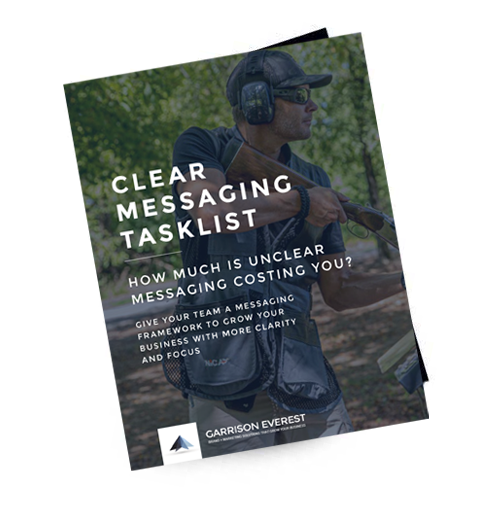
How much is unclear messaging costing you?
The following tasklist will help you (the business leader, director or executive) determine if your message is clear. It will help you and your team think about how to make your customer “the hero,” and position your brand as the “the guide” that will revolutionize your marketing.
What you will learn:
- Introduction to a 7-part framework to clarify your message
- Know what to say and what order to say it in
- Give your team a messaging process that can be implemented across all your marketing materials



